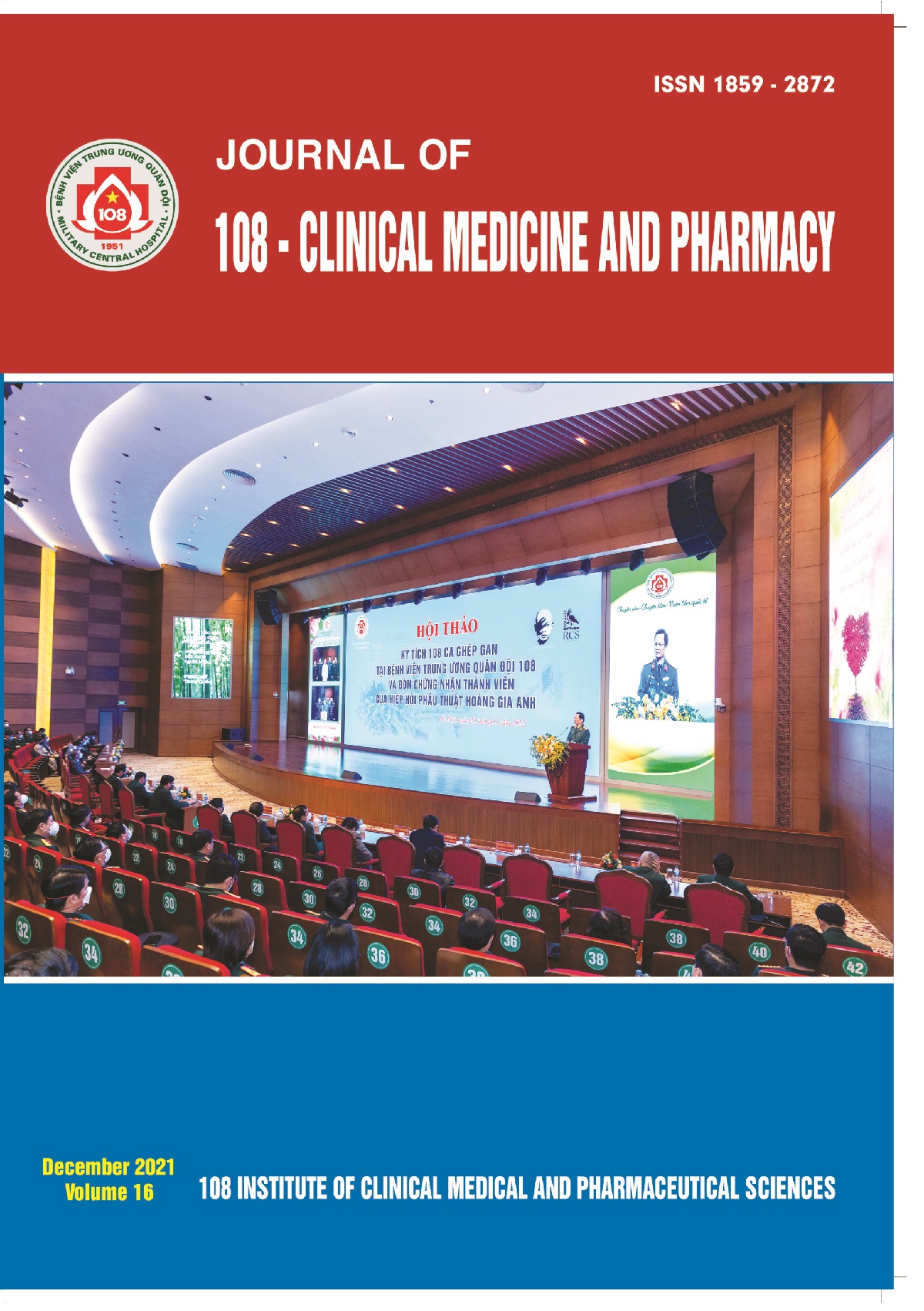Clinical and sub-clinical characteristics of rickettsioses at 108 Military Central Hospital from 2020 to 2021
Main Article Content
Keywords
Tóm tắt
Objective: Rickettsioses remains one of the most common infectious diseases in Vietnam, the atypical disease’s manifestation often leads to misdiagnosis with other diseases and results in a delayed proper treatment. The study aimed to characterise the clinical and laboratory features of rickettsioses. Subject and method: This was a retrospective cohort study. The clinical and sub-clinical features of rickettsioses were described. All patients admitted to the 108 Military Central Hospital, Hanoi from May 2020 to September 2021. Result: There were 22 patients enrolled into the study and 15/22 (68.2%) hospitalised 5 days after fever onset. The most common clinical features were abrupt fever (100%), headache (100%), myalgia (100%), and skin hyperemia (100%). Some rare signs were recorded: Eschars (9.1%), lymphadenopathy (0%), and rash (4.8%). The laboratory findings showed 95% of the patients with elevated liver transaminases and 51.1% cases with thrombocytopenia. All of the patients were treated with doxycycline and 100% (22/22) fully recovered. The defervescence time was 74.9 ± 38.6 hours and the hospitalisation time was 7.1 ± 1.4 days. Conclusion: The study demonstrated that the appearance of longer than five days fever, severe headache, thrombocytopenia, and elevated liver transaminase could suggest a diagnosis of rickettsioses.
Article Details
Các tài liệu tham khảo
2. Aung AK, Spelman DW, Murray RJ et al (2014) Rickettsial infections in Southeast Asia: Implications for local populace and febrile returned travelers. The American journal of tropical medicine and hygiene 91(3): 451-460.
3. Rajapakse S, Weeratunga P, Sivayoganathan S et al (2017) Clinical manifestations of scrub typhus. Transactions of The Royal Society of Tropical Medicine and Hygiene 111(2): 43-54.
4. Trung N.V., L.T. Hoi, V.M. Dien et al (2019) Clinical manifestations and molecular diagnosis of scrub typhus and murine typhus, Vietnam, 2015-2017. Emerging Infectious Disease journal 25(4): 633.
5. Hamaguchi S., N.C. Cuong, D.T. Tra et al (2015) Clinical and epidemiological characteristics of scrub typhus and murine typhus among hospitalized patients with acute undifferentiated fever in northern vietnam. Am J Trop Med Hyg 92(5): 972-978.
6. Ogawa M, Hagiwara T, Kishimoto T et al (2002) Scrub typhus in Japan: Epidemiology and clinical features of cases reported in 1998. Am J Trop Med Hyg 67(2): 162-165.
7. Blanton LS (2019) The rickettsioses: A practical update. Infectious disease clinics of North America 33(1): 213-229.
8. Su TH, Liu CJ, Shu PY et al (2016) Associated factors and clinical implications of serum aminotransferase elevation in scrub typhus. Journal of Microbiology, Immunology and Infection 49(6): 941-946.
 ISSN: 1859 - 2872
ISSN: 1859 - 2872
